Food and Drink: Special Occasion Foods
National and Public Holidays
Día de la Independencia (Independence Day)
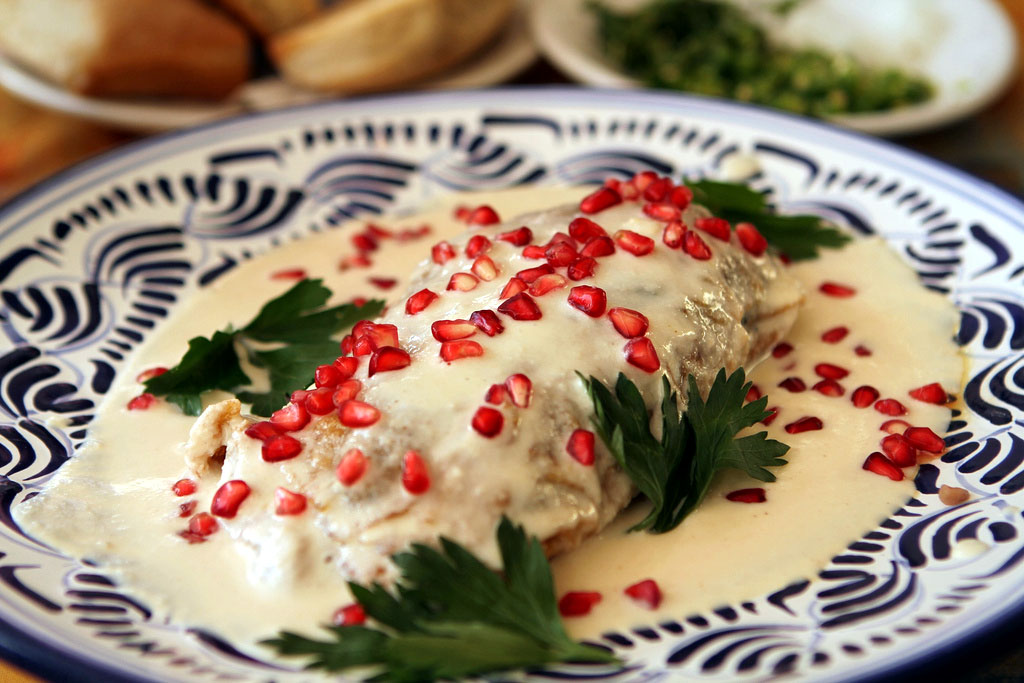
Celebrated on September 16, Mexico’s Independence Day marks the beginning of the fight for freedom from Spanish rule. The day is filled with patriotic fervor, street parades, and family gatherings. A central part of the celebration is the food, which symbolizes national pride. Chiles en nogada, a dish made of stuffed poblano chiles covered with a walnut sauce and pomegranate seeds, represents the colors of the Mexican flag: green, white, and red. Pozole, a hearty corn-based soup with pork, is another favorite, enjoyed with fresh lime, radishes, and lettuce. These foods are typically shared during family dinners after watching the president’s reenactment of the historic “Grito de Dolores.”
Cinco de Mayo (Fifth of May)
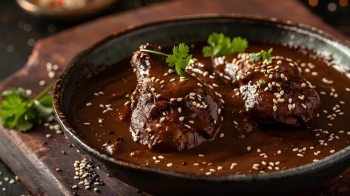
Although not as widely celebrated across Mexico as in the United States, Cinco de Mayo commemorates the Battle of Puebla and Mexican resistance against French forces in 1862. In Puebla, where the holiday is celebrated most, the focus is on traditional foods and drinks. Mole poblano, a complex sauce made from chiles, chocolate, and various spices, is central to the occasion. It’s served with chicken or turkey and symbolizes the region’s rich culinary history. Tacos and tamales are also popular during festive street parties, accompanied by traditional drinks such as horchata or aguas frescas.
Religious and Spiritual Occasions
Día de los Muertos (Day of the Dead)
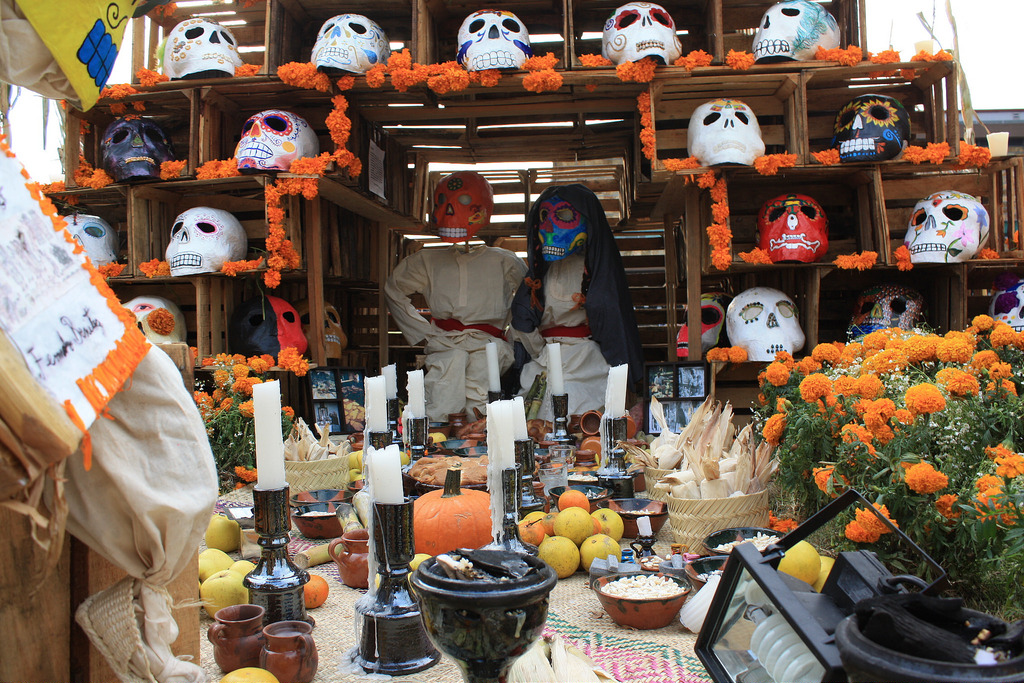
Día de los Muertos, celebrated on November 1 and 2, honors deceased loved ones. Altars are set up in homes and cemeteries, and food plays a crucial role in inviting the spirits back for a night. Pan de muerto, a sweet bread topped with sugar and shaped to represent bones, is a key offering. Families also prepare the favorite foods of their departed relatives, such as tamales or mole, which are placed on the altars. Calaveras de azúcar (sugar skulls) are symbolic treats, representing both the sweetness and inevitability of death.
Navidad (Christmas)
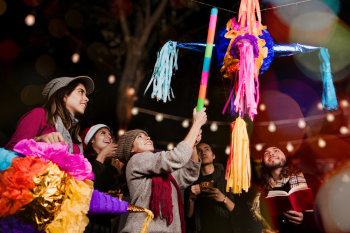
Christmas in Mexico is celebrated with religious ceremonies, family gatherings, and special foods. The Christmas season starts in earnest on December 16, when families begin eight evenings roaming between friends' and neighbors’ houses, singing and praying, as a reenactment of Las Posadas, the biblical holy pilgrimage to Bethlehem. Each night of Las Posadas, children are given piñatas filled with candy and fruit.
The festivities end on Christmas Eve, called Nochebuena, with a large family feast that typically includes ensalada de nochebuena (a salad with roasted beets, nuts, and pomegranate seeds), pozole or other soups, and turkey. Tamales, filled with meats, cheese, or sweet fillings, are the centerpiece of many Mexican Christmas feasts. They are often paired with atole, a warm corn-based drink flavored with cinnamon or chocolate. Bacalao (salted cod) is another dish commonly served during the holiday season, reflecting Spanish influence, and is usually accompanied by romeritos, a local herb cooked with potatoes and mole. The evening is finished with crispy fried buñuelos (fried dough) and a mug of spicy Mexican hot chocolate or ponche (hot spiced punch).
Día de la Candelaria (Candlemas)
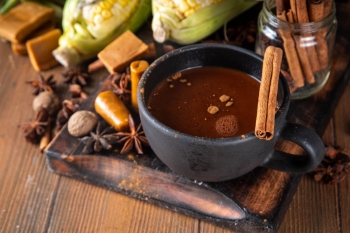
Celebrated on February 2, this holiday marks the end of the Christmas season and is associated with the presentation of Jesus at the temple. Families come together to eat tamales, which hold religious significance dating back to Mesoamerican rituals.
Whoever finds the small baby figurine in their piece of rosca de reyes, a bread served for Three Kings Day in January, is responsible for bringing the tamales to the Candelmas gathering. Atole, a thick corn-based beverage, or champurrado, a version with chocolate, is often served alongside the tamales, keeping with the festive and familial atmosphere.
Life Milestones and Personal Celebrations
Quinceañera
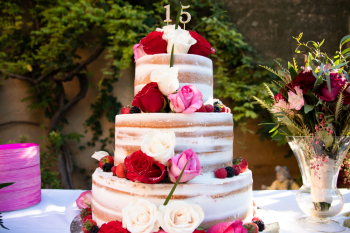
A quinceañera celebrates a girl’s 15th birthday, marking her transition from childhood to womanhood. The event is similar to a wedding in its formality and significance, often beginning with a church ceremony followed by a lavish party. A meal of traditional Mexican dishes is served, with mole being a popular choice for its richness and deep flavors. Arroz (rice), frijoles (beans), and tortillas are staples of the meal, but the highlight is the quinceañera cake—an elaborate multi-tiered confection that serves as a centerpiece for the party and symbolizes the sweetness of life.
Weddings
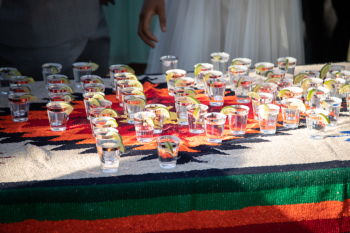
Weddings in Mexico are grand celebrations filled with food, music, and dancing. A traditional wedding menu often includes dishes such as mole, tamales, and cochinita pibil (slow-cooked pork). The food symbolizes abundance and the merging of families. Desserts such as buñuelos (fried dough) and tres leches cake (a sponge cake soaked in three kinds of milk) are common and reflect the couple's hope for a sweet life together. A key part of the celebration is the toast with tequila or mezcal, paying homage to the country’s rich heritage of distilled spirits.
Cultural and Regional Festivals
Guelaguetza Festival

The Guelaguetza Festival, held in Oaxaca, celebrates the region's indigenous culture and traditions. It’s a lively event filled with music, dancing, and food. Oaxacan cuisine is at the heart of the festival, with tlayudas, large crispy tortillas topped with refried beans, meat, and cheese, being a popular street food. Another famous dish is mole negro, a dark and flavorful sauce made from chiles, chocolate, and spices, often served with chicken. These foods are a reflection of the deep-rooted indigenous and mestizo heritage of Oaxaca, making the festival a true celebration of community.
Noche de Rábanos (Night of the Radishes)

Taking place in Oaxaca on December 23, Noche de Rábanos is a unique festival where artists carve radishes into intricate designs, often depicting nativity scenes or local traditions. The event is accompanied by food stalls offering traditional Oaxacan fare. A popular dish during the festival is tamales oaxaqueños, wrapped in banana leaves and filled with ingredients such as mole or beans. Champurrado, a thick hot chocolate drink made with masa (corn dough), is a warming beverage enjoyed as people stroll through the festive market, marveling at the radish carvings.
Carnival
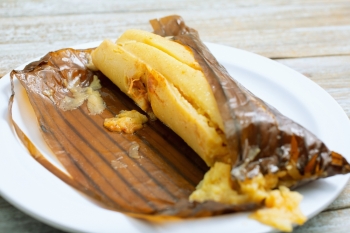
Carnival is a lively festival celebrated before Lent, particularly in coastal regions such as Veracruz and Mazatlán. The focus is on indulging before the fasting and abstinence of Lent, and the food reflects this spirit of indulgence. Traditional dishes include tamales and barbacoa (slow-cooked meat), but seafood is especially popular in coastal areas. Shrimp, fish tacos, and ceviche highlight the bounty of Mexico’s coasts and are enjoyed in abundance during street parties and parades. Carnival is a time of feasting, fun, and celebration of Mexico’s diverse cultural influences.
Copyright © 1993—2024 World Trade Press. All rights reserved.

 Mexico
Mexico